
The Makings Of An Authentic Spanish Paella
There is a lot of debate as to what exactly qualifies as an authentic paella. Turns out Valencians, disgusted with the butchering of their beloved and global-claim-to-fame paella, have even created a website where they explain the do’s and don’ts of a true, authentic paella.
To a Valencian, aside from the rice, paellas should stick with the traditional classic combination of snails, rabbit, and broad beans. Chicken is somewhat tolerated, but seafood? That is out. Garlic, debatable. Lemons, no way. Chorizo, well that happens to be the worse offender of all with a very terrifying near-revolt from the Spanish. Lucky for Yotam, they must have missed the pancetta in his beautiful seafood paella recipe. And if you have some time, I recommend you read all about the epic paella emoji debate. Hysterical.
At any rate, suddenly I felt my paella did not even qualify as a paella and I certainly dared not publish a recipe for it. Not because I thought wikipaella would ever find my little corner of recipes here, or call me out on it, but because I felt I had no right to label my dish as “paella” and I didn’t know what else to call it.
However, after about a year of making paella in the shadows — no shared recipes and definitely no instagram pics of the vibrant medallions of chorizo displayed on top of my paella — I got over it. If you follow these basic steps to making a traditional paella, you can add whatever you want to it and not only will it be delicious but I give you permission to call it a paella because with all due respect to the Valencians, live your life, I say. So here it is; my paella with chicken and chorizo, which I promise is an easy, one-pot fabulous dish that is fun, crowd-pleasing, and pretty darn good. Let’s get started.
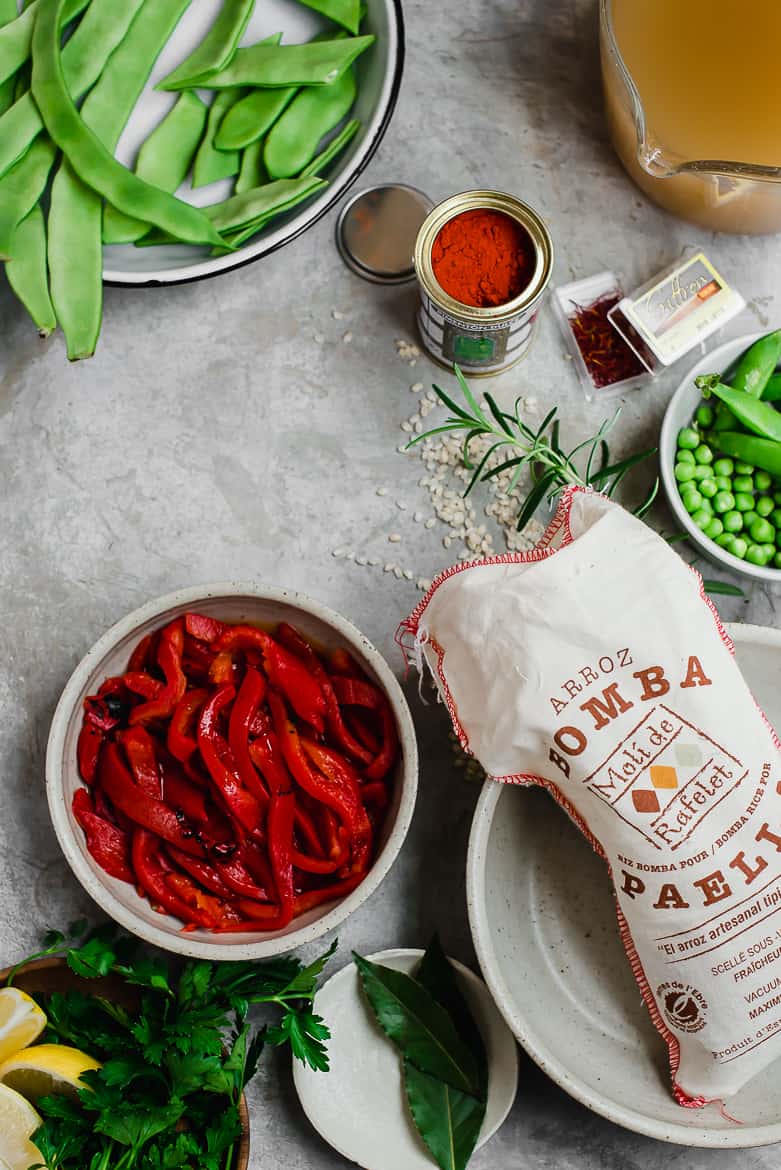
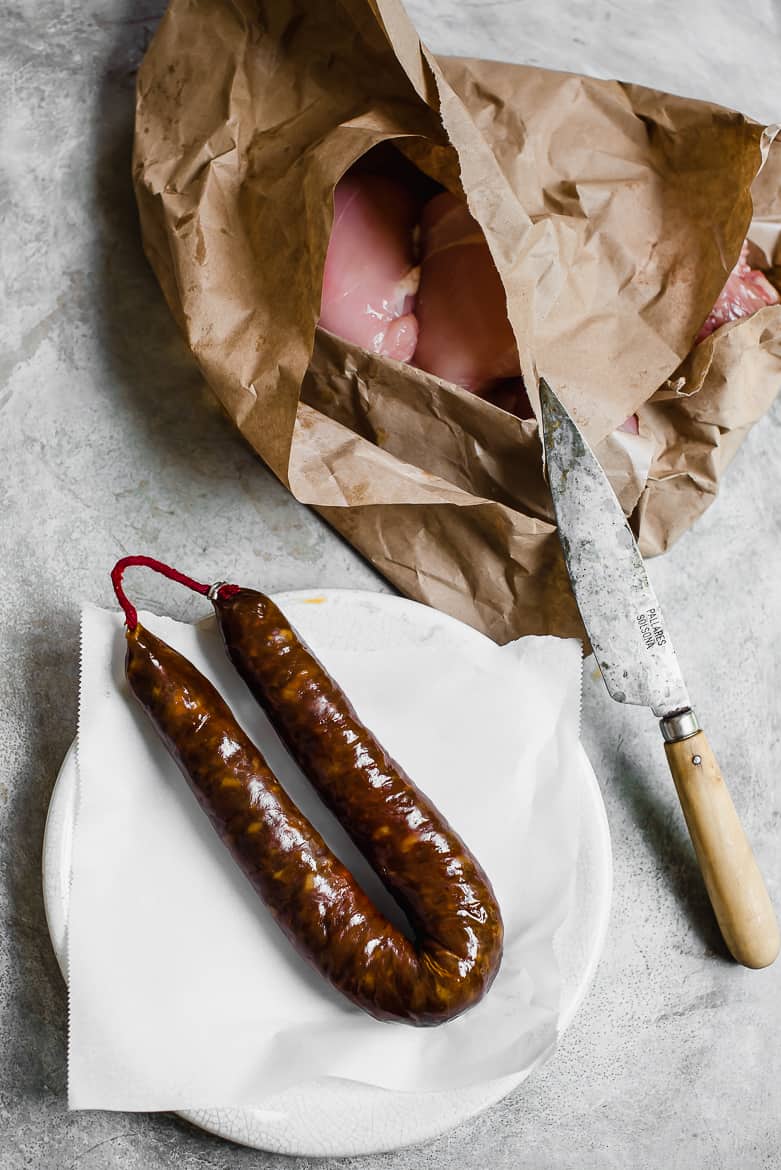


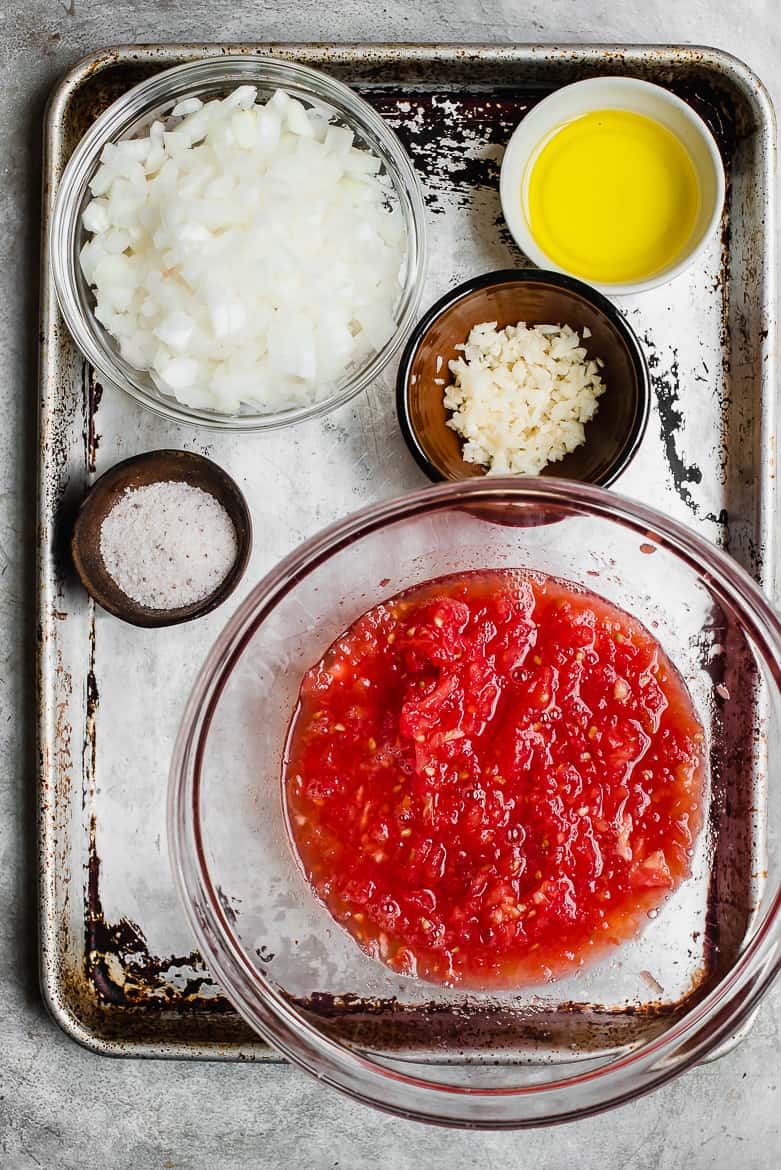
The Best Paella Pan
I have more paella pans than I care to admit to. Though most have been purchased under the guise of research, I really do make it a lot. What is a lot? Well this summer alone I have already made it about 10-12 times, and as soon as I’m done writing this post I will be making a large batch of sofrito to have ready for the weekend.
Traditional paella pans are not expensive and you can order them from many websites online or if you live in my area, you can purchase here. Before I owned a traditional paella pan, or this pan which I also love to make paella in, I used a regular cast iron skillet. Basically, any round, wide and shallow pan will work. For size, a 15-inch (38cm) is the most popular and, depending on how deep the pan is, it can hold about 2 1/2-3 cups of rice which feeds about 8-10 people. To make smaller amounts use a 12-13-inch pan.
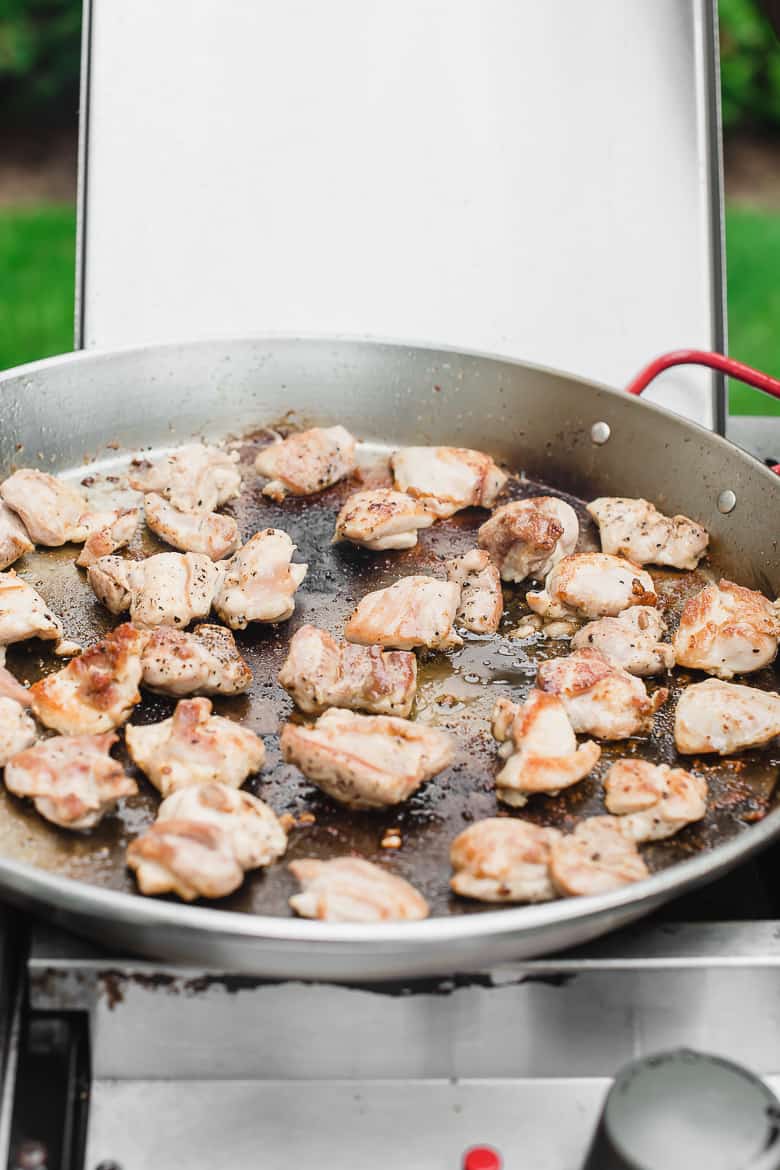
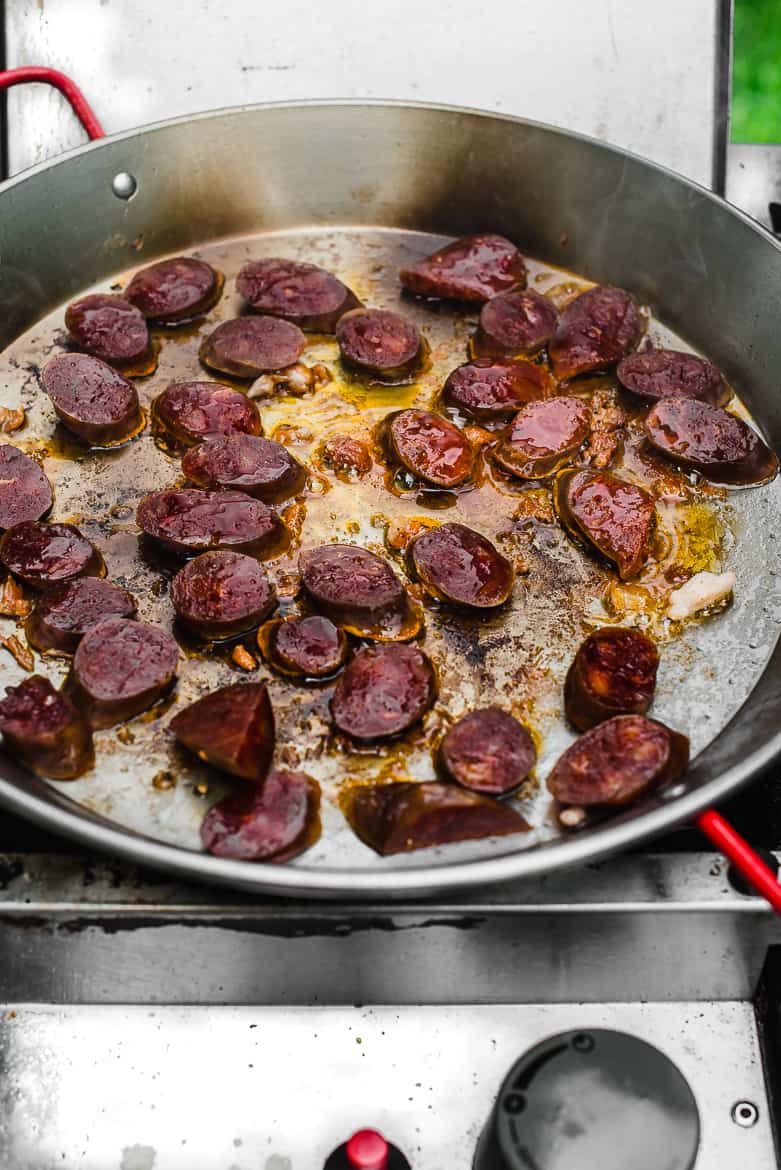
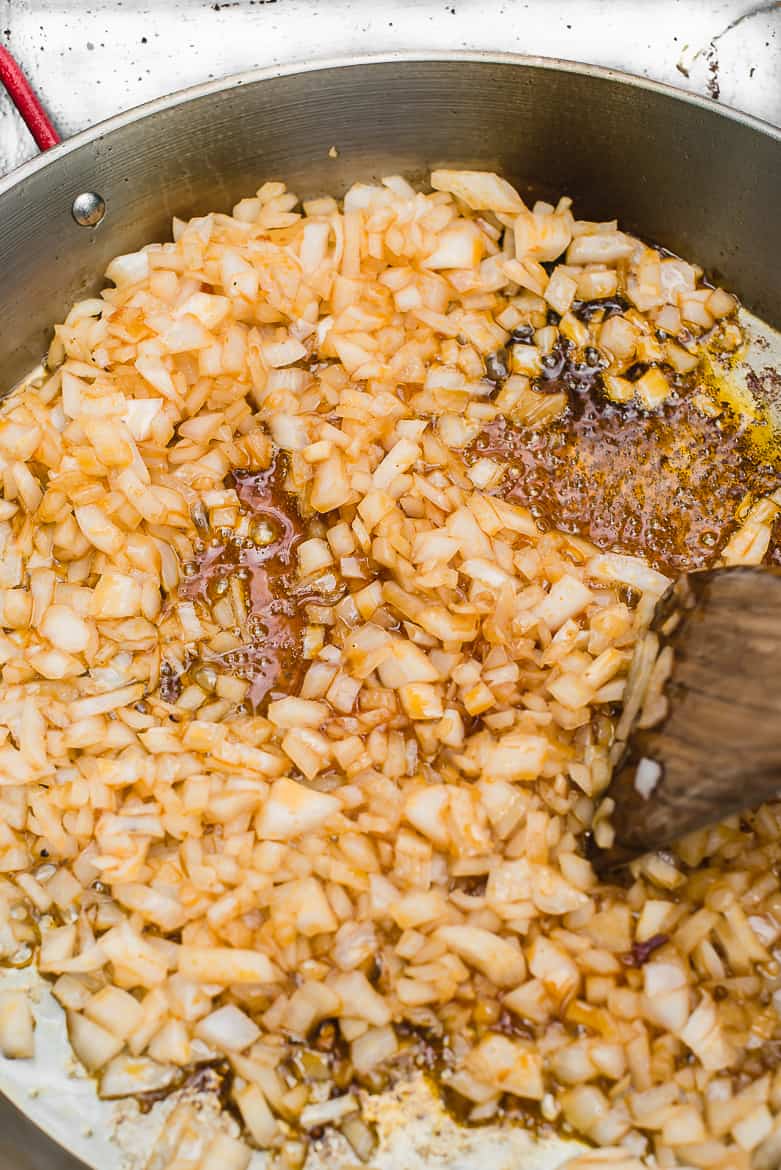
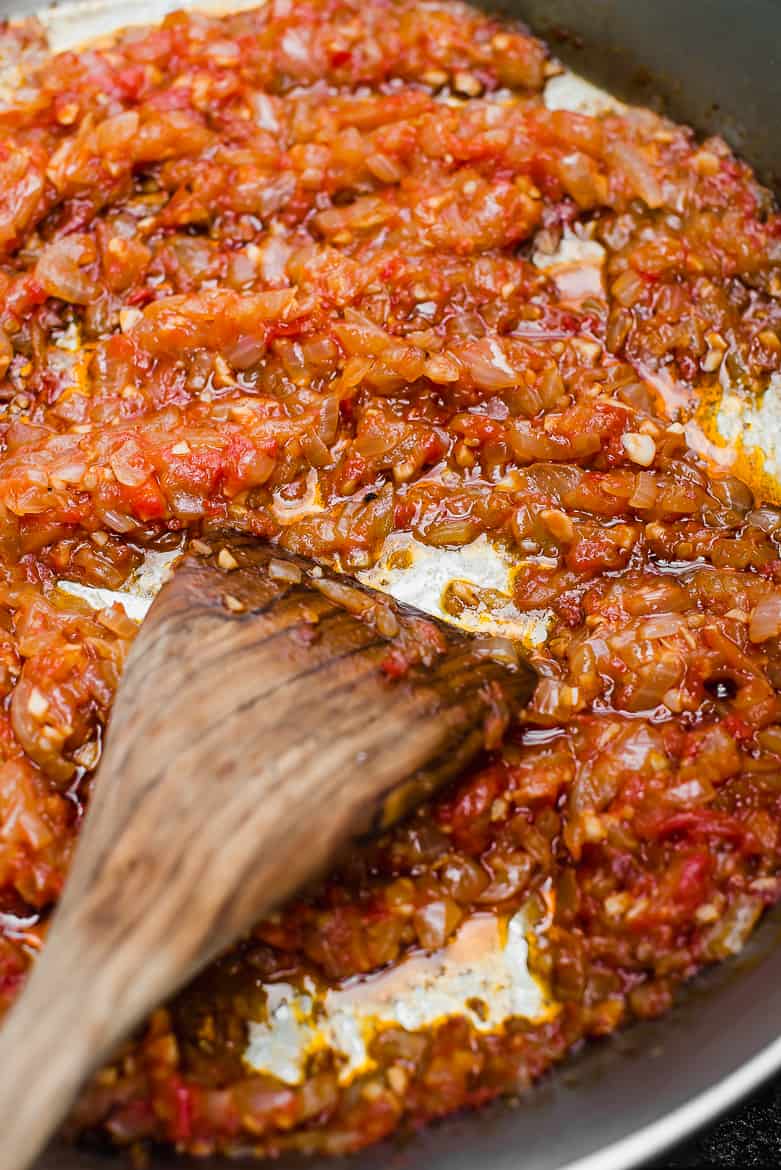
The Sofrito
The sofrito is the very important base that adds wonderful flavor and depth to all paella’s and is super simple to make. It consists of sautéed onions, garlic and tomatoes cooked in a generous amount of olive oil until softened and thickened.
According to this recipe from the very popular Spanish restaurant in Toronto Patria, the sauce should cook long enough to become almost jam-like. This will take about 30-40 minutes. However, I have found it takes less time to thicken if you use tomatoes from a can. I try and use fresh tomatoes whenever possible but canned tomatoes will work just as well. Use whatever is available or easiest for you. The real beauty of sofrito is that you can make it way ahead of time and have it in your fridge for when you are ready to make the paella. It keeps well in the fridge for up to 5 days or freeze it for up to 2 months.

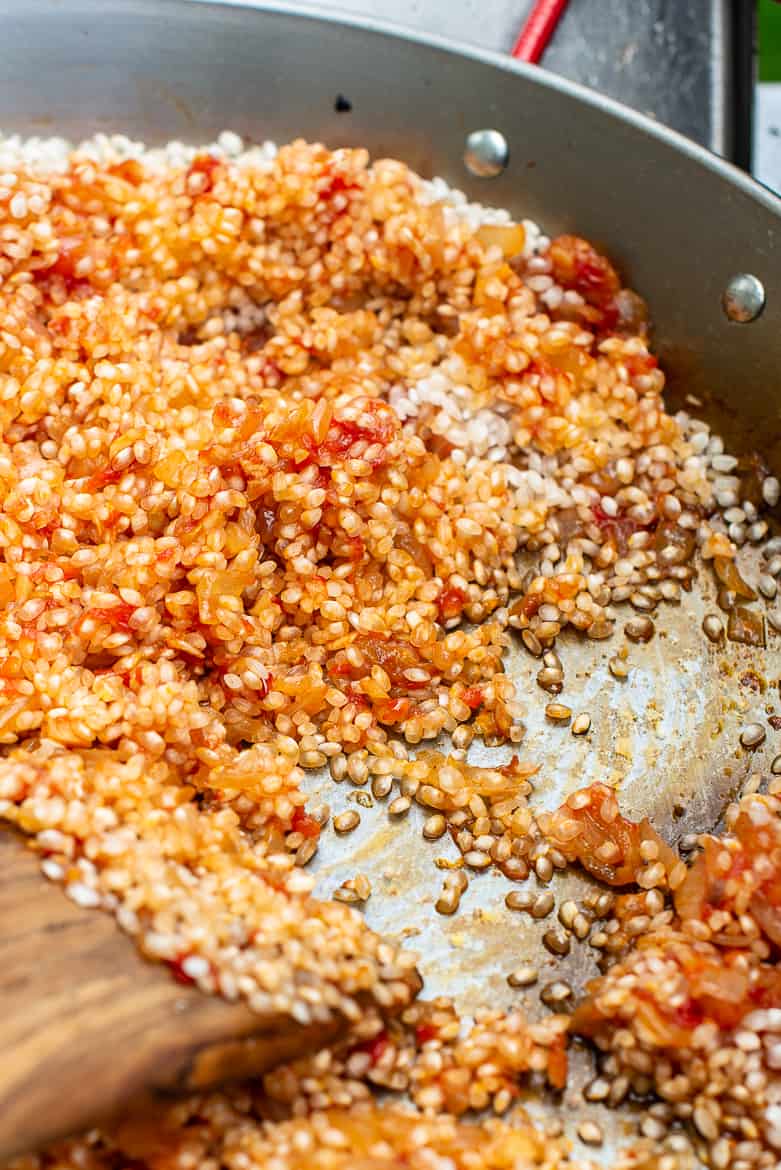
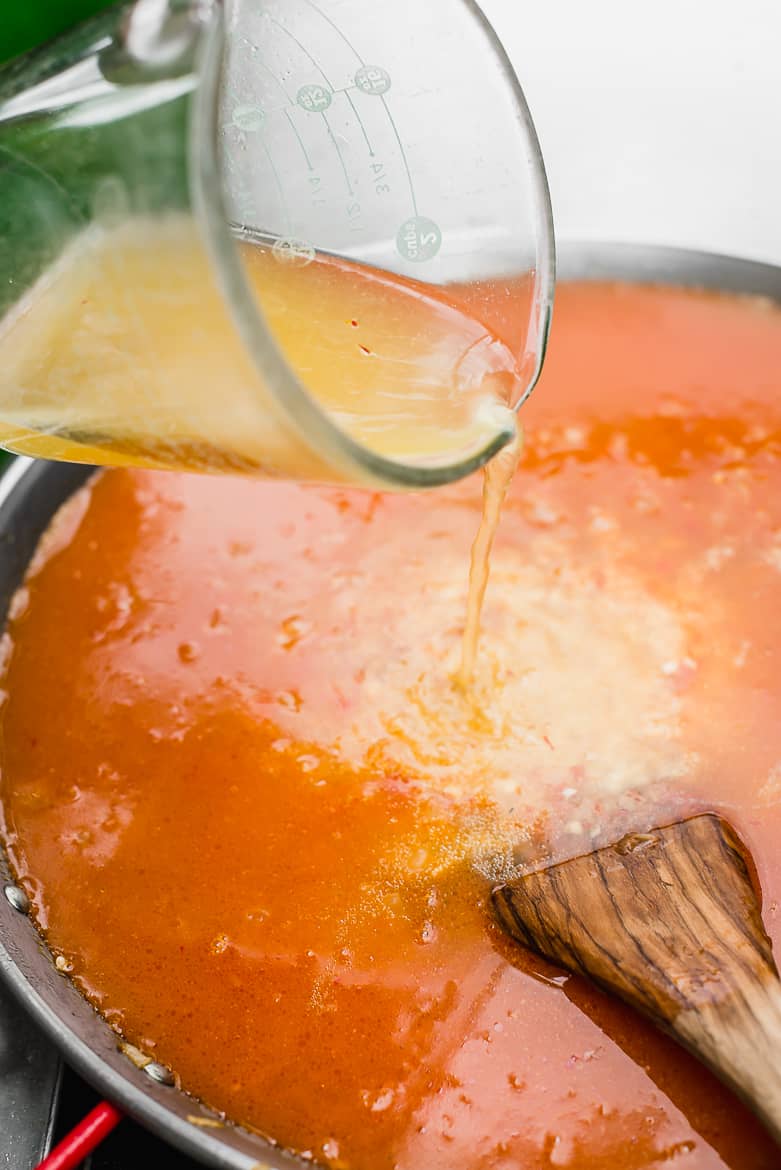

The Best Rice for Paella
There is a little-known secret to making an exquisite paella — paella is all about the rice. You need to have the right one and the best variety to make a good paella. You are looking for a short grain rice that absorbs a lot of liquid and will not stick together. The best rice for this is Spanish Bomba, also known as Valencian rice. Though many recipes will say you can use arborio to make paella, you will not have the best results with it. This is because arborio releases a lot of starch when cooked and will only absorb twice it’s volume in liquid as opposed to Bomba which absorbs three times it’s volume. Calasparra is another good Spanish short grain rice to use in a paella.
Bomba rice used to be hard to find but is now available in most well-stocked grocery stores or specialty deli shops. Unfortunately, Bomba rice that is imported from Spain is quite expensive. But keep in mind paella’s have a lot of other ingredients that bulk it up so 2 cups of rice will feed a large crowd.
Tip: Unlike risotto, you are never ever to stir the rice in a paella once the liquid starts boiling – you want plump dry rice, not creamy and mushy.
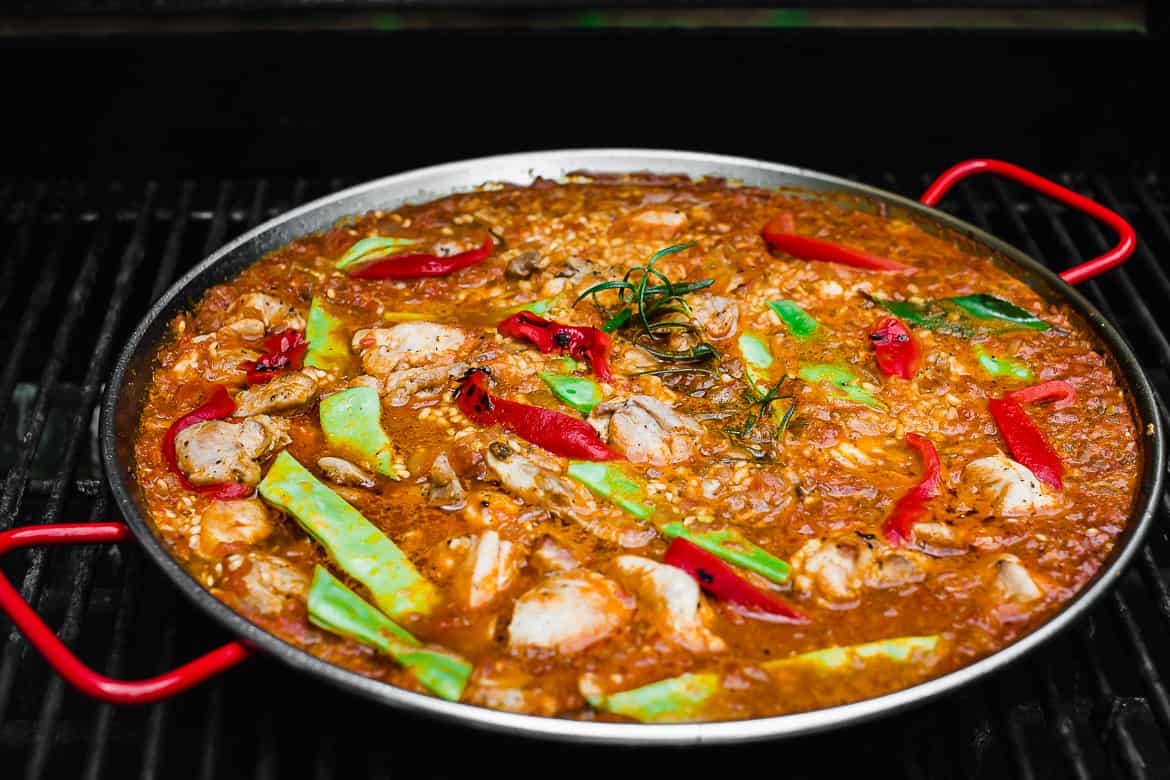

Ingredients You Will Need
Chorizo: For this recipe, you need the dry-cured chorizo, not the raw chorizo sausage that is sold with casings.
Chicken: Chicken thighs are best here because they will not dry out like chicken breast. You can use bone-in chicken pieces or boneless, skinless chicken thighs. I typically use boneless pieces becasue they cook quicker.
Sofrito: For the Sofrito you will need onions, garlic and tomatoes. See section above more on what makes a great Spanish sofrito.
Vegetables: For the vegetables, broad beans and peas seem to be the traditional ones to top your paella but use whatever you have on hand that will cook fairly quickly. Marinated artichokes are great in lieu of the chicken or in addition to.
Saffron: Always found in a Spanish paella, saffron is what gives the rice its beautiful golden hue and adds a mild, but very distinct, perfume-y flavour. Though not cheap, a little goes a long way and you will only use a small amount of it. Please, please do not substitute with turmeric. That will completely change the flavour profile.
Stock: All paellas require a good stock (preferably homemade). For a store-bought chicken stock, I don’t mind using this one.
Spanish pimnetón: Pimentón, or smoked paprika, is commonly used in most Spanish dishes and is one of the most important seasonings when making paella. You can use sweet or hot pimentón, or a mix. Again, a little goes a long way so don’t overdo it, you don’t want it to overpower the paella.
Bomba rice: Without bomba rice, your paella will not be as good. See section above for more details on why this rice is so important.
Variations And Substitutions
The ingerdient adaptations for this paella can be endless. Here’s a few suggestions:
Vegetables: Artichokes (jarred or fresh) are wonderful in a paella. You can use any variety of green beans or use snow peas or sugar snap peas.
Make it vegetarian: Use a vegan chorizo-flavoured sausage, vegetable broth, and a combination of all the vegetables suggested above.
Add seafood: Unfortunately, I have a seafood allergy and cannot add any shellfish to my paella but if I make a paella for guests, I will make some Spanish-style garlic shrimp (gambas al ajillo), and/or mussels cooked in white wine, and serve them separately.
The Socarrat
If you are cooking your paella over an open flame you will almost certainly achieve the prized socarrat – the toasty crust the rice forms at the bottom of the pan and what some claim to be an intrinsic part of paella.
If, like me, you are cooking over a gas flame, you will have to turn up the heat at the very end but this will take some practice to get right because you don’t want to overcook the rice, or the rest of the ingredients. Don’t focus too much on it if you are new to paella making — if my paella turns out socarrat-less, no one misses it. Eventually, when your paella skills are honed, you can move on to the socarrat quest.
Aside from being beautiful and insanely delicious, this chicken and chorizo paella is perfect for a dinner party or to feed a crowd. Experiment, be daring, and have fun with it!




Ingredients
- 1/4 teaspoon saffron strands crushed gently with your fingers
- 1/4 cup boiling water
- 1 1/2 pounds skinless boneless chicken thighs, cut into 1 1/2-inch pieces
- Kosher salt and freshly cracked black pepper
- 1/4 cup extra-virgin olive oil, divided
- 4 ounces dry-cured Spanish chorizo sliced into 1/4-inch thick coins
- 1 onion diced
- 3 cloves garlic minced
- 3 large tomatoes halved crosswise and grated on the large holes of a box grater until only skins remain; discard the skins. OR use 1 (15-ounce) can crushed tomatoes.
- 2 teaspoons pimentón de la Vera smoked sweet, or hot, Spanish paprika
- 2 1/2 cups Bomba rice
- 7 cups homemade chicken stock or low-sodium broth, warmed to a simmer
- 1 large rosemary sprig
- 1/4 pound broad beans or green beans cut into 2-inch lengths
- 1 jar roasted red bell pepper sliced into strips, divided
- 1 cup fresh or thawed frozen peas
- 1/4 cup chopped parsley
- lemon wedges, to serve
Instructions
- Preheat the oven to 450°. In a small heatproof bowl, mix the saffron with the boiling water, set aside to steep.
- Heat a large heavy-bottomed pan over medium-high heat and add 1 tablespoon olive oil. Add chorizo and cook until it is golden and oil is released, about 2-3 minutes. Transfer to a small plate and set aside.
- While chorizo is cooking, season chicken generously with salt and pepper.
- To the same pan, over medium-high heat, add 1 more tablespoon olive oil. Add half of the chicken pieces and cook, flipping once, until well browned but not cooked through, about 3 minutes a side. Transfer to a plate and repeat with remaining chicken.
- To make the sofrito, lower heat to medium-low and add remaining 2 tablespoons olive oil to the pan. Add onions and cook gently, without browning, until translucent and soft, about 5 minutes. Stir in the garlic and cook for 1 more minute. Add in the tomatoes and a few pinches of salt. Simmer gently, over very low heat, stirring occasionally, until the tomatoes begin to dry out and get deeply coloured and slightly jammy, about 20 minutes. At this point, if you're making the sofrito ahead, allow to cool, then store in the refrigerator, until ready to use. Otherwise, continue with the recipe.
- Add the pimentón to the sofrito and reserved saffron with water, stir and cook for 1-2 more minutes. Add the bomba rice and stir to coat well with the sofrito. Stir in the beans and half the sliced red peppers.
- Raise the heat to medium-high and add 5 cups of hot stock and a few more pinches of salt and pepper. Stir gently to make sure the rice is evenly distributed. Nestle in the chicken pieces and place rosemary sprig on top. From this point on, DO NOT STIR the paella again. Bring to a gentle boil and cook for 5-7 minutes, without disturbing.
- Slowly add the remaining 2 cups of broth. If there is no room in the pan, let the liquid boil down a few more minutes before adding the rest of the liquid. Transfer paella to preheated oven.
- After 10-12 minutes, scatter the peas over the paella and nestle in the chorizo (again, no stirring). Cook for 3-5 minutes more.
- Remove paella from oven. If there is still liquid in the pan, place the pan on the stove over high heat and cook for a few minutes or until liquid is absorbed.
- Allow paella to sit for 10 minutes before serving.
- Garnish with remaining sliced red peppers and chopped parsley. Serve with lemon wedges, for drizzling.





Gerry West
Excellent recipe for paella! Love the tips for ingredient substitutions as I was unable to find broad beans-green beans were fine.
Thanks, Sandra!
Sandra Valvassori
So great to hear you enjoyed the paella! My all-time favourite dish 🙂 And thank you so much for writing and sharing – really appreciate it.
Dom
This was delicious. The best paella I’ve ever made. Thanks for the recipe
Sandra Valvassori
So wonderful to hear this, Dom! Thanks so much for writing and letting us know.
Andrew Jeske
Excited to make this today; just one question.
How big a “jar” (or can) of roasted peppers?
Thx.
Sandra Valvassori
Sorry for the late reply! The jar of peppers should be about 350ml (12 ounces) but you can add as few or as many as you like. Would love to hear how it went making the paella!
Andrew Jeske
No worries! I have 12-oz cans of piquillos, probably tossed in 6-7 oz.
It was still wet after it’s time in the oven; probably should have left it a few more mins before moving back to the stovetop. Hard to tell how much liquid there is left in the big pan, but there was a bit more than I would have liked.
Regardless, our friends were delighted with dinner. Started with some garlic shrimp, and the paella was a huge hit. Thanks so much!!!
Sandra Valvassori
That’s fantastic, Andrew – so happy to hear the paella was a hit! I agree, it’s hard to tell how much water is left in the pan and to gage how long to keep cooking it for. So many variables will influence the liquid (the pan you use, the rice, the tomatoes, etc) so my best advice is keep making it often and you’ll have it all sorted in no time! Always here and happy to help if you have any questions. Thank you for coming back and letting us know how it went, really appreciate it!
Andrew Jeske
There’s a very geeky part of me that wants to try a thermometer next time, figuring (like a rice cooker) that at 212F or so the water must be gone. 🙂
Sandra Valvassori
Ha, that sounds genius! Let me know if you try it and how it goes…
But I was just wondering, did you use Bomba rice?
Andrew Jeske
Calasparra, of course!
And it was probably closer to perfect than I’m suggesting…it certainly wasn’t soupy, just wetter than I’d hoped. There were even bits of soccarat, just not as much as I’d have liked. Maybe I just need to leave it in the oven until it completely stops bubbling.
Anyway, it’s a wonderful recipe and I’ll certainly make it again. A real crowd-pleaser.
Sandra Valvassori
Love Calasparra! I’m sure it was delish!
Keith
Hi Sandra – I’ve just bought my first paella kit (though I’ve made paella in the past on borrowed or hired gear) and I’m looking forward to making this recipe as (sadly) I raised four kids who all hate seafood. I should disown them.
One point about your comments the risotto though – a good risotto will NEVER be mushy. It should be creamy and al dented. Mushy is overcooked – the sad result achieved by many and one of the reasons my wife avoids it whenever anyone but me is cooking it. She is a bit fussy though and won’t order poached eggs when eating out for fear they’ll be undercooked.
Anyway, it’s time to give your paella recipe a go. Wish me luck.
Sandra Valvassori
Hi Keith, that’s great you will be giving the paella a try! I went over the recipe today and tweaked it a little with some instruction improvements. Let me know if you have any questions along the way – I’m more than happy to help.